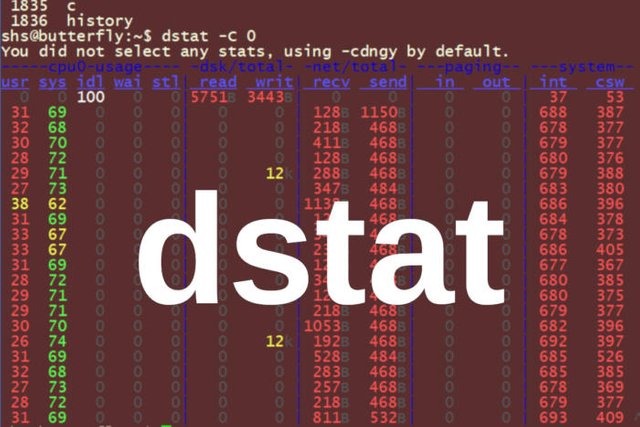
Dstat provides valuable insights into Linux system performance, pretty much replacing older tools, such as vmstat, netstat, iostat, and ifstat.
Want to do a quick performance check on your Linux system? You might want to take a look at the dstat command. Dstat provides valuable insights into Linux system performance, pretty much replacing a collection of older tools such as vmstat, netstat, iostat, and ifstat with a flexible and powerful command that combines their features.
With this one command, you can look at virtual memory, network connections and interfaces, CPU activity, input/output devices and more. In today's post, we'll examine some dstat commands and see what they can show you about your systems.
Dstat options and defaults
First, let's start with a fairly simple command. With the dstat -c (CPU) option, dstat displays CPU stats. In the example below, we're asking for two-second intervals and six reports.
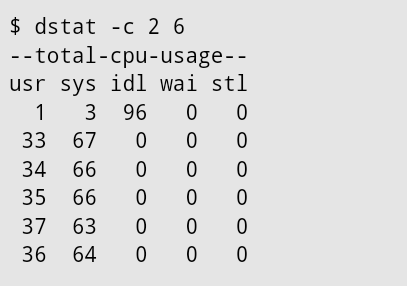
Note that the first line of data in this report, which looks very different than the others, gives you the averages since the system was last booted and is returned immediately regardless of the specified interval. In this example, we see that the system on average has been largely idle (96%), but is now quite busy working between user and system processing tasks.
If you don't supply any options with dstat, the command will use a default set (-cdngy) set of options. These include:
c -- cpu
d -- disk
n -- network
g -- paging stats
y -- system stats
The output of this command will look something like what you see below.
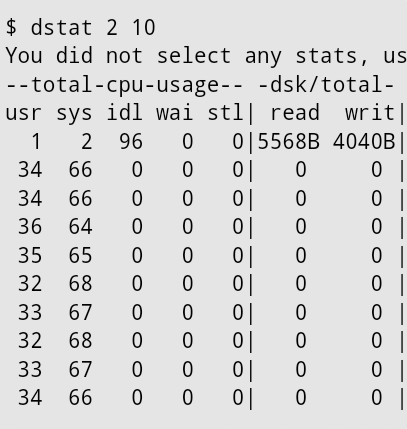
You probably noticed the "You did not select any stats" message near the top of the output displayed above. To overcome this with little effort, simply add the -a option. It will select the default options and omit the warning message.
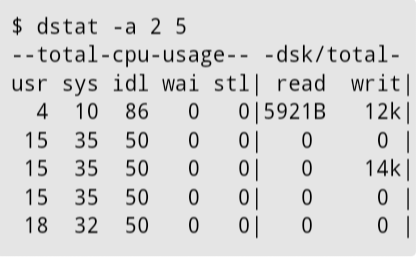
In this "no options" approach, you can still set the timing for each interval in seconds and the number of intervals you want to see reported. If you don't specify the number of intervals, the command will continue running until you stop it with a ^c.
What does this tell you?
In the output shown above, we saw evidence that the system being queried was fairly busy. No idle time was being reported; the CPU was spending all of its time between user and system tasks. Compare this with report, which shows the system is idle half the time.
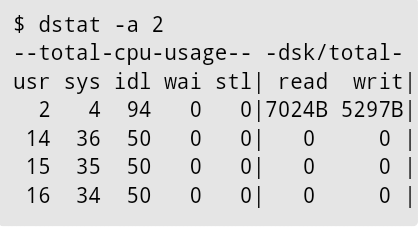
The disks, on the other hand, are not busy at all with zero reads and writes.
One key to becoming adept at evaluating system performance is to run commands like these periodically — even when you don't see the need to question how well a system is running. If you come to know what normal performance looks like for a server, you will have a much easier time spotting problems.
Here's another example, this one with some disk activity:
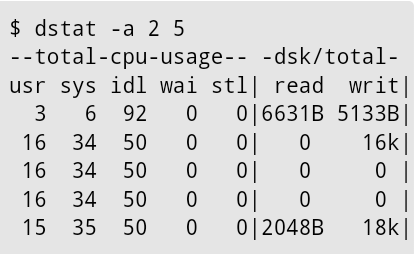
In all these samples, we're not seeing any paging (loading executable images into a process's virtual memory) activity. There is a fairly constant amount of interrupts and context switching going on, but the numbers are all quite modest.
In the command below, we're looking at a memory usage report. Notice the amount of free memory compared to the memory in use. This system is not being challenged.
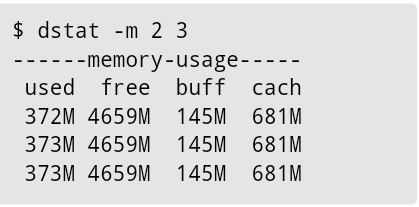
In the next command, we're looking at an advanced memory usage report. Some additional memory statistics are provided.
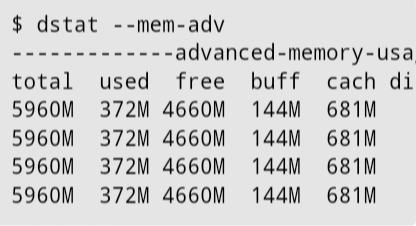
In this next command, we're looking at open files and inodes in use.
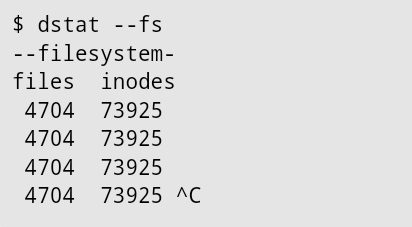
In this last example, we're generating the standard report, but adding one thing. We're also writing the report to a .csv file so that it can be used in other tools such as Excel.
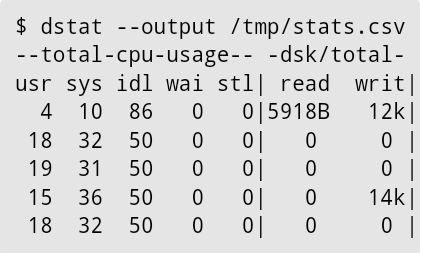
Here's what the csv file looks like:
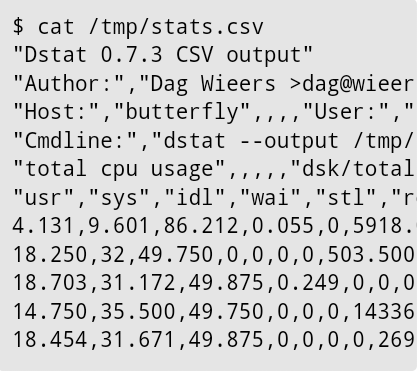
What is dstat?
As mentioned, dstat is a great tool for looking at just about all aspects of system performance. But another answer to this question is that it's a Python script and one you're free to peruse if you'd like to see how it works.
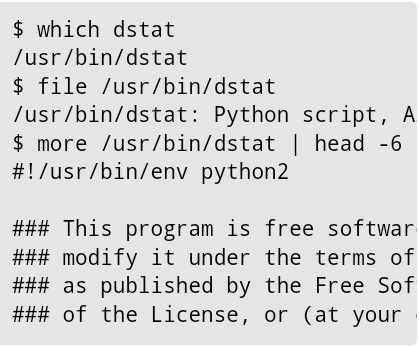
Hi! I am a robot. I just upvoted you! I found similar content that readers might be interested in:
https://www.networkworld.com/article/3291616/linux/examining-linux-system-performance-with-dstat.html
Downvoting a post can decrease pending rewards and make it less visible. Common reasons:
Submit